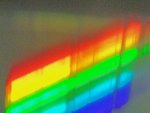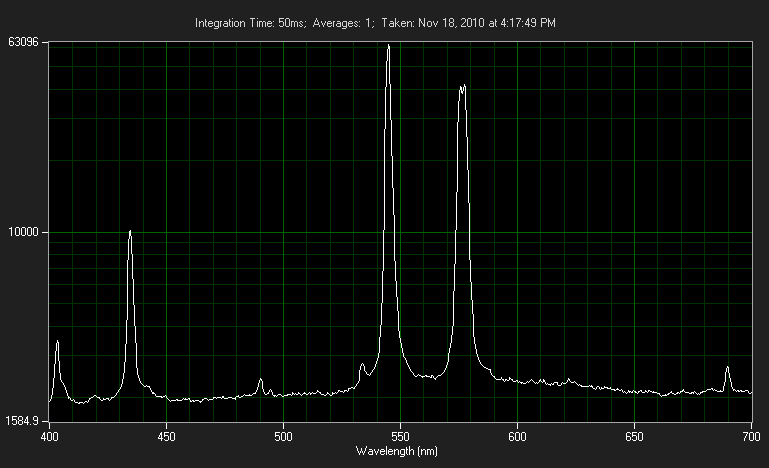- Joined
- Jul 4, 2008
- Messages
- 2,499
- Points
- 113
Hey there, I have just been playing with my homemade CD spectroscope after getting a little inspiration from an article about a mini-glass ball spectroscope that a team of researchers developed for the iPhone and other CCD based phones.
Anyways... I made this quick and dirty CD spectroscope and used my iPhone 4S camera as my sensor.
I started first with a Hg CFL bulb. I noticed right away... the Hg spectra lines.
I wonder how this will work for coherent sources. I'd need a complete spectral line to compare.... got me thinking.
Last picture I was too close to my source and got contaminated spectrum.
2nd picture also shows a bit of contamination but is cleaned up.. 1st picture shows a near perfect Hg line.
The bright spots are specific to only Hg discharge tubes.
Using iPhoto I straightened out my spectra lines and cropped horizontally across the picture.
Anyways... I made this quick and dirty CD spectroscope and used my iPhone 4S camera as my sensor.
I started first with a Hg CFL bulb. I noticed right away... the Hg spectra lines.
I wonder how this will work for coherent sources. I'd need a complete spectral line to compare.... got me thinking.
Last picture I was too close to my source and got contaminated spectrum.
2nd picture also shows a bit of contamination but is cleaned up.. 1st picture shows a near perfect Hg line.
The bright spots are specific to only Hg discharge tubes.
Using iPhoto I straightened out my spectra lines and cropped horizontally across the picture.









